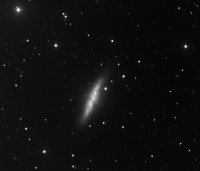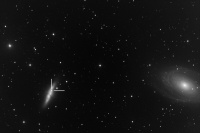Difference between revisions of "Supernova Catalog"
| Line 3: | Line 3: | ||
The data collected below comes from multiple sources, although primary catalog is compiled leveraging [http://www.cbat.eps.harvard.edu/cbat.html IAU Central Bureau for Astronomical Telegrams]. The Central Bureau for Astronomical Telegrams (CBAT) operates under the auspices of Commission 6 of the International Astronomical Union (IAU) and is a nonprofit organization, with principal funding coming from subscriptions to the various services offered by the Bureau, and (during 2008-2010) also from the U.S. National Science Foundation. | The data collected below comes from multiple sources, although primary catalog is compiled leveraging [http://www.cbat.eps.harvard.edu/cbat.html IAU Central Bureau for Astronomical Telegrams]. The Central Bureau for Astronomical Telegrams (CBAT) operates under the auspices of Commission 6 of the International Astronomical Union (IAU) and is a nonprofit organization, with principal funding coming from subscriptions to the various services offered by the Bureau, and (during 2008-2010) also from the U.S. National Science Foundation. | ||
| − | I've | + | I've cataloged these primarily as a personal education tool, and to begin tracking supernova I have photographed. To date: 1! A new hobby. |
| + | |||
| + | =Messier 82= | ||
| + | [[file:Messier82.jpg|thumb|200px|right|Messier 82]] | ||
| + | [[file:Messier82-SN 2014J.jpg|thumb|200px|right|SN 2014J in Messier 82, Messier 81 to the right. Taken Jan 29, 2014]] | ||
| + | Messier 82 (also known as NGC 3034, Cigar Galaxy or M82) is a "remarkable galaxy of peculiar type in constellation Ursa Major. It is usually classified as irregular, though probably a distorted disk galaxy, and famous for its heavy star-forming activity, thus a prototype member of the class of starbursting galaxies." <ref>[http://messier.seds.org/m/m082.html THE MESSIER CATALOG, http://messier.seds.org/]</ref> | ||
| + | |||
| + | SN 2014J, a Type Ia supernova, was observed in the galaxy on 21 January 2014. I photographed this supernova on January 29th, 2014, shortly after it was discovered. | ||
| + | =SN 2014J= | ||
| + | '''SN 2014J''' is a type Ia supernova in Messier 82, and was discovered in mid-January 2014. It is the closest type-Ia supernova discovered in the past 42 years. The last supernova that was unambiguously closer to Earth than SN 2014J was SN 2004dj, which was of Type II-P supernova. This supernova occurred in the galaxy NGC 2403. Due to the brightneszs of this supernova, many automated search programs which search for supernovas actually ignored this one (assuming error). It was discovered accidentally during an undergraduate teaching session at University of London Observatory. I shot this on January 29th, two days before SN2014J stopped brightening, which reached its peak brightness at magnitude 10.5. | ||
Revision as of 12:42, 18 May 2014
A supernova is a stellar explosion caused when the mass of a star's core exceeds the sustainable limit or when nuclear fusion produces more energy than the star can contain. The explosion emits massive amounts of energy. Supernovae are classified as cataclysmic variables, the majority of which are close binary systems. Supernovae show sudden, dramatic, and final magnitude increases of 20 magnitudes or more, compared to a regular nova, which typically brighten 7 to 16 magnitudes of the course of 1 to several hundred days.
The data collected below comes from multiple sources, although primary catalog is compiled leveraging IAU Central Bureau for Astronomical Telegrams. The Central Bureau for Astronomical Telegrams (CBAT) operates under the auspices of Commission 6 of the International Astronomical Union (IAU) and is a nonprofit organization, with principal funding coming from subscriptions to the various services offered by the Bureau, and (during 2008-2010) also from the U.S. National Science Foundation.
I've cataloged these primarily as a personal education tool, and to begin tracking supernova I have photographed. To date: 1! A new hobby.
Messier 82
Messier 82 (also known as NGC 3034, Cigar Galaxy or M82) is a "remarkable galaxy of peculiar type in constellation Ursa Major. It is usually classified as irregular, though probably a distorted disk galaxy, and famous for its heavy star-forming activity, thus a prototype member of the class of starbursting galaxies." [1]
SN 2014J, a Type Ia supernova, was observed in the galaxy on 21 January 2014. I photographed this supernova on January 29th, 2014, shortly after it was discovered.

